- pubmed.ncbi.nlm.nih.gov - Exfoliative Skin-peeling, Benefits from This Procedure and Our Experience; Merita Grajqevci-Kotori and Allma Kocinaj
- ncbi.nlm.nih.gov - Efficacy and safety of superficial chemical peeling in treatment of active acne vulgaris; Hassanain Al-Talib, Alyaa Al-khateeb, Ayad Hameed, and Chandrika Murugaiahs
- pubmed.ncbi.nlm.nih.gov - Skin anti-aging strategies; Ruta Ganceviciene, Aikaterini I. Liakou, Athanasios Theodoridis, Evgenia Makrantonaki, and Christos C. Zouboulis
- ncbi.nlm.nih.gov- Carbon Peeling Laser Treatment to Improve Skin Texture, Pores and Acne Lesions: A Retrospective Study; Claudio Conforti, Stefania Guida, Caterina Dianzani, Piergiorgio Turco, Vito Cazzato, Iris Zalaudek, and Domenico Piccolo
- solen.sk - Peeling and the principles of its correct implementation; Lucie Růžičková Jarešová
- pubmed.ncbi.nlm.nih.gov - Retinoids in the treatment of skin aging: an overview of clinical efficacy and safety; Siddharth Mukherjee, Abhijit Date, Vandana Patravale, Hans Christian Korting, Alexander Roeder, and Günther Weindl
- solen.sk - New possibilities to improve skin quality; Kateřina Klauzová
- pubmed.ncbi.nlm.nih.gov - Chemical peels; Gary D Monheit
What is a peeling and how does it help the skin of the face and body? + Types and homemade variant
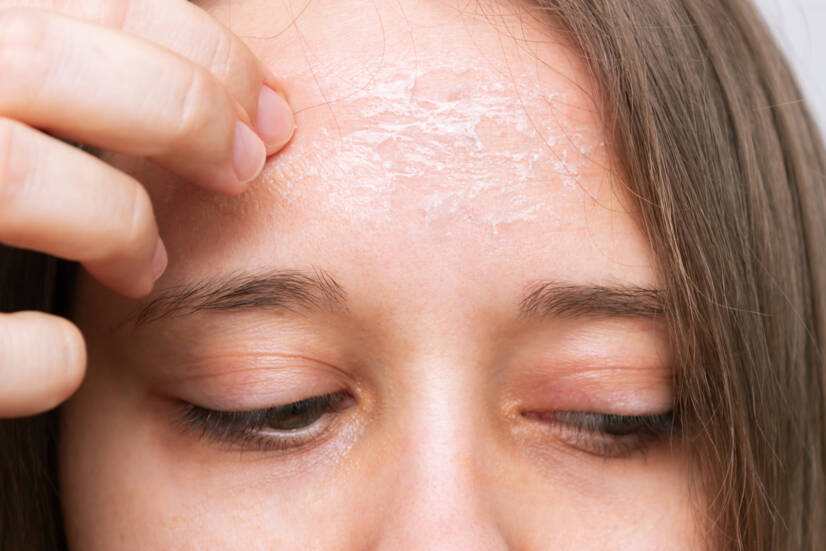
Peeling - can it restore a youthful appearance or get rid of acne?
Article content
Scrubs are probably what most of us think of when we think of beauty products, the ones that contain tiny particles that help remove dead skin cells from our bodies.
The root of the word peel, translated from English, means to peel/exfoliate. This means that the essence of peeling is to "peel or exfoliate" old and worn out skin.
This cannot be achieved by using tiny particles in cosmetic products. Such an effect is achieved by so-called chemical peeling.
Products containing particles that we call 'peels' are more accurately called scrubs.
In this article, we will look at the different types and kinds of scrub treatments. We will also look at their uses.
Peeling - its main purpose of use is restoration:
- aging skin caused by age
- ageing skin caused by exposure to sunlight
But very often it is also used
- in the treatment of acne scars
- or after hyperpigmentation - also known as melasma
What is the most important thing about any type of peel?
The most important thing is the fact that these treatments should be carried out by a professional. Ideally a doctor - a dermatologist.
However, equally important is the preparation of the skin for the peeling procedure. At the same time, the treatment of the skin after such a procedure is also an important part.
Chemical peeling
Chemical peeling refers to cosmetic procedures for the treatment of the skin. Various chemical substances are used in these treatments. These are mainly organic acids.
This skin treatment is the most widely used dermoesthetic treatment in the world. It is also often used as an alternative to laser skin treatments.
Sometimes it is recommended to combine a chemical peel with a fractional laser treatment. Or it is also used in combination with dermoabrasion.
The action of organic acids disrupts the layers of the skin. Subsequently, inflammatory processes take place in the damaged skin. After these inflammatory processes, the skin begins to peel off spontaneously. Professionally, this phenomenon is called ablation.
The result of the skin's regenerative and reparative mechanisms is straight and taut skin.
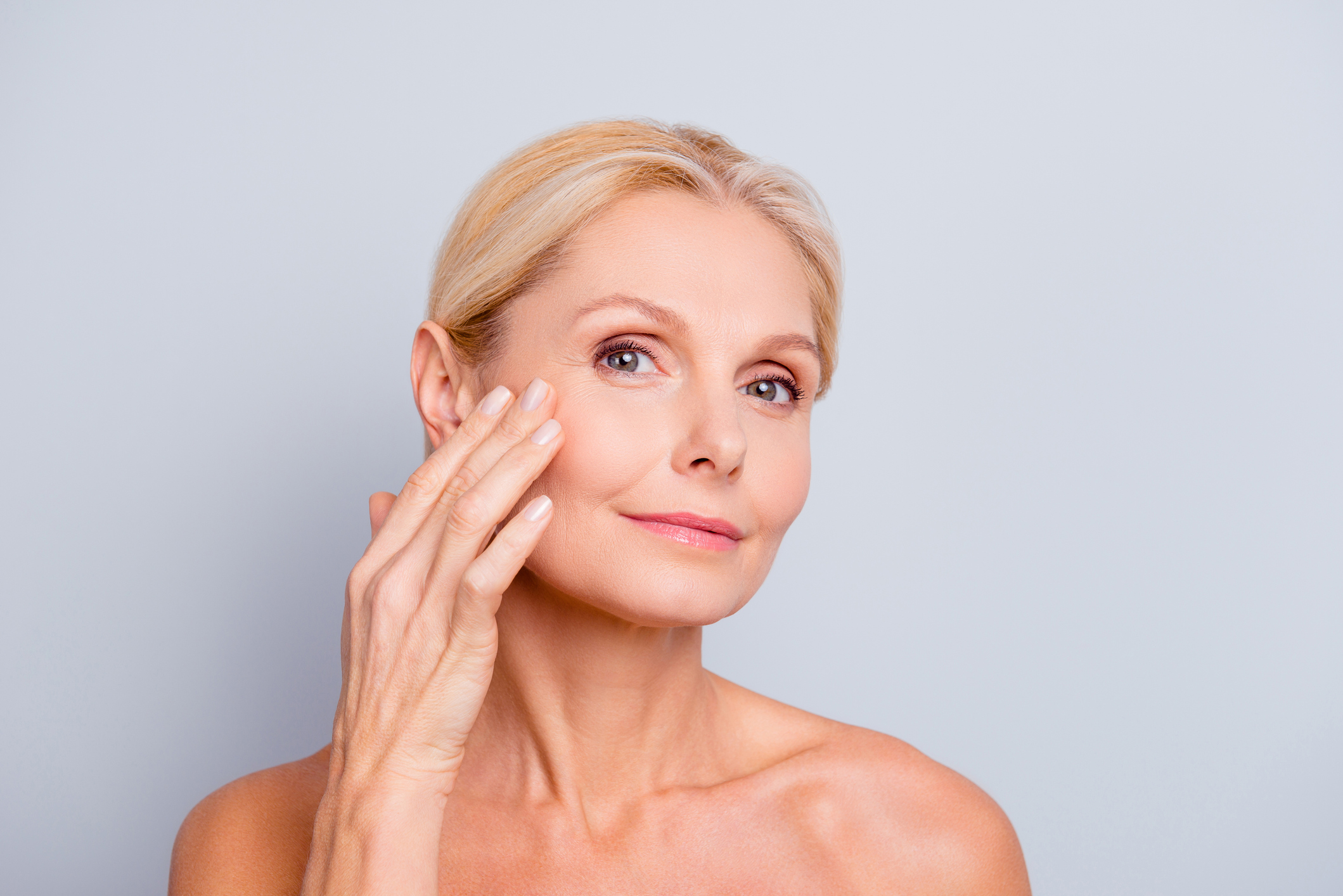
Chemical peeling is used to treat skin that:
- is affected by UV radiation
- needs to fill deep wrinkles or fine lines on the face
- needs to get rid of acne scars
- needs to improve the vitality, tone and texture of the skin
Chemical peels use different types of acids.
For example:
- Salicylic acid.
- lactic acid
- Glycolic acid
- trichloroacetic acid
The action of the above acids promotes:
- exfoliation - removal of dead cells from the upper part of the skin of the face or body
- depigmentation
- revitalization and regeneration - restoration of skin structure
Chemical peels contribute to revitalization by stimulating:
- fibroblasts - fibroblasts are the basic cells of connective tissue, they can produce collagen
- remodelling of elastin
- but also the remodelling of collagen fibres
Chemical peeling can have three levels:
- superficial - the epidermal layers are peeled without crossing the basal layer of the skin.
- medium deep - affects the upper reticular dermis
- and deep - penetrating the lower reticular dermis
The depth to which the active substances penetrate depends on:
- the acid used
- its concentration
- the pH of the solution
- the duration of application
The effect of a chemical peel depends on:
- the depth of its action (superficial, medium, deep)
- the concentration of the substance used
- but also on the degree of skin damage
Before the actual treatment of the skin with chemical peeling, a consultation with the patient should be carried out.
The very first and most important step is to take the patient's medical history. This includes an assessment of the general condition of the skin and a diagnosis. Based on this information, treatment options and a course of action will be determined.
Communication between the patient and the treating professional is also important. If you have any questions or if something is not clear, ask. Sometimes you may have very unrealistic expectations of a given treatment. This can subsequently lead to disappointment and dissatisfaction with the treatment.
It is also important to note that in some cases it is not appropriate to apply a chemical peel. This is especially true if:
- you have recently undergone laser hair removal or dermoabrasion - or any other treatment that may disrupt the structure of the skin
- if you or a close relative has keloid or hypertrophic scars
- you are pregnant
- you are prone to hyperpigmentation after inflammation
- you are being treated with products containing isotrethionine
- you have recently sunbathed - either in a tanning bed or in the natural sun
It's also important to mention during your consultation whether you suffer from any allergies, as these treatments are not recommended for some types of allergies.
The treatment itself is preceded by so-called skin preparation, which starts at least 15 days before the treatment itself. During this period, it is recommended to use face masks or lotions.
These should contain:
- hydroxyl acids (AHA and BHA)
- lactic acid
- or salicylic acid
But in much lower concentrations than the treatment itself.
Moisturising the skin and protecting it from UV rays should not be forgotten. Products with SPF 50 or higher are recommended.
Surface peeling
To begin with, we will look at the effects of a surface peel. We will also describe the substances that are used for such treatments.
As we have already mentioned, peeling has several effects on our skin.
Superficial peeling:
- Promotes rapid regeneration of the upper part of the skin - the epidermis
- Removes blemishes
- Removes fine but also deeper wrinkles - by stimulating the activity of fibroblasts, regenerating elastin and collagen fibres
The substances used for the surface treatment include:
- 20-40% glycolic acid.
- salicylic acid
- hydroxyl acids - specifically alpha and beta acids
- and 10% trichloroacetic acid.
Glycolic acid peels (20-40%)
- This treatment takes a short time - 1 to 3 minutes, during which several layers of skin are removed
- The skin layer is very effectively and quickly smoothed
- This treatment is effective for acne-prone skin, but also improves skin tone and has the effect of improving skin texture
- It is also effective in treating acne scars
- Its use increases the absorption of creams and serums designed for the skin
Peeling using AHA, BHA (alpha and beta hydroxyl acids)
Treatments based on the use of these organic acids lead to:
- Acceleration of the cycles taking place in the cells - these processes are slowed down as a result of aging
- Improved smoothing of the top layer of the skin
At the same time, blood circulation in the skin is activated, resulting in:
- Stimulation of fibroblasts
- Increases and stimulates the production of glucosamines
- Improves the so-called skin trugor - increases the internal pressure of the tissues, thus increasing the elasticity and overall appearance of the skin - the skin looks taut, fresh, hydrated
- Removes the top dead layer of the skin
Peeling using salicylic acid
This peel is very easy to apply and is also the least time-consuming. It is mainly used in the treatment of acne vulgaris.
Treatment with 10% trichloroacetic acid
This acid is also abbreviated as TCA. Its concentration can be even higher than 10%. Higher concentrations work deeper and are used to achieve greater results.
The effects of this acid on the skin are as follows:
- Clears deeply clogged pores
- Treats but also controls severe forms of acne
- Can reduce or even eliminate signs of premature skin aging
- Improves the colour and also the texture of the skin - thus improving its appearance
- Can smooth and revitalise the skin
- It can also remove dark and white spots from our skin - signs of long-term skin damage due to sun exposure
A side effect of surface peeling is usually redness of the skin. This usually subsides after 48 to 72 hours.
Medium-depth peeling
This type of peel works in the middle layers of our skin.
This type of treatment is recommended, for example, for skin that is more damaged by UV rays from the sun.
Since this treatment works in the deeper layers, it can also cause more discomfort during the treatment. Patients should also be prepared for their skin to look bad even a week after such a treatment.
Intense redness of the skin is typical for this treatment. This redness usually lasts for the first two days. However, the redness of the skin can easily persist for 10 to 14 days after the treatment.
On the third to fourth day, the skin darkens. On the fifth day after the treatment, the skin peels off. This is also known professionally as desquamation.
These times are, of course, only indicative. Side effects may appear 5 to 7 days after treatment. This is related to the time the skin needs to recover. And in this respect, each of us is individual. At the same time, the occurrence of these side effects is also influenced by the size of the area of skin treated.
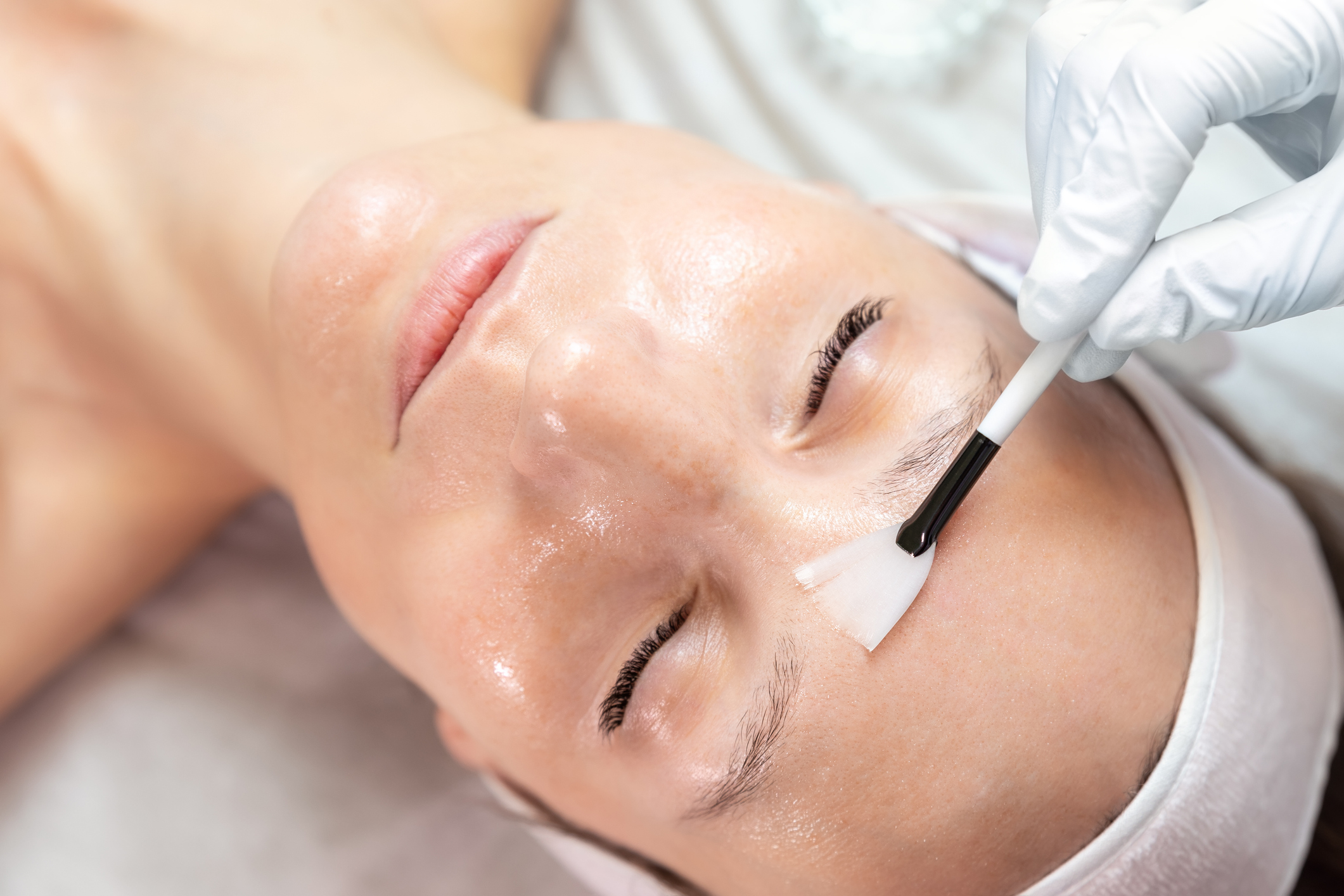
Absolute contraindications for this treatment are patients with:
- dark skin - because there is a high risk of hyperpigmentation
- treatment with or just after retinoids
- herpes simplex - this disease must first be treated with antivirals, only then can such a procedure be performed
- people just after sunbathing (either in the natural sun or in a solarium) - because the ability of the skin to regenerate is reduced
For medium peeling, the acids already mentioned are used, but in higher concentrations. They are mainly used:
- trichloroacetic acid - in concentrations of 10 to 40 %.
- glycolic acid - in concentrations of 50 % to 70 %
Peeling using 10-15% trichloroacetic acid
The effects of this acid on the skin have already been described above.
In addition to the above, these medium concentrations can smooth fine wrinkles. However, they have little effect on deep ones.
Peeling using 35-40% trichloroacetic acid
When these higher concentrations are used, epidermal necrosis - the death of tissue - occurs. However, this happens without a significant and serious toxic effect on our body.
This treatment is the so-called "standard" for medium-depth peeling of the face, but also of the hands. It is important to note that these concentrations should only be used by qualified health professionals. The reason is simple. The procedure has many side effects.
It includes, for example, the occurrence of:
- Hyperpigmentation
- but scarring can also occur
Peeling using 50-70% glycolic acid
Treatments using these concentrations of glycolic acid have the same indications and procedures as treatments with trichloroacetic acid.
In some cases, doctors choose to treat with a superficial peel first. They then increase the concentration of the acid in question. This achieves an effect in the middle layers of the skin. This combined procedure guarantees significantly higher effectiveness.
Deep peeling
Deep peeling removes:
- Deep wrinkles
- acne scars
- keratoses on the skin - these arise as a remnant of a severe acne course
This treatment is very aggressive indeed. After this treatment, hypopigmentation - loss of pigment from the skin - can occur. As a result, white patches on the skin can appear. Therefore, like the previous one, it must only be performed by a specialist.
Nowadays, this treatment is rarely performed anymore.
Often a combination of medium and deep peels is chosen - instead of using a deep peel alone.
Alternatively, other types of treatment are chosen, such as laser treatments or dermoabrasion, which have fewer side effects than deep peels alone.
Phenol peels
Phenol peels are classified as deep peeling treatments. They are able to penetrate deeper layers of the skin. They are used to treat advanced to severe forms of skin aging. They are mainly caused by UV radiation. Phenol peels are also very effective in treating deep wrinkles on the forehead or around the mouth.
This treatment procedure was described as early as the 1960s.
It is very important to mention that this treatment is very uncomfortable and painful. Therefore, it is performed under general anaesthesia. During it, the patient must be monitored.
The patient must be put to sleep during the procedure. Therefore, this type of peeling is contraindicated in these patients:
- with cardiac arrhythmia or a tendency to arrhythmia - whether they have an active disease or have suffered from it in the past
- with liver or kidney disorders
Chemical peels in the treatment of acne
Acne vulgaris affects both adolescents and adults.
In the active phase of acne vulgaris, it is accompanied by other complications, such as:
- Hyperpigmentation
Or, conversely, there may also be:
- hypopigmentation
But it is also typically:
- the formation and appearance of scars - which can lead to skin disfigurement over time
Doctors recommend the use of a superficial chemical peel. It is one of the treatment options for acne vulgaris. This treatment is used when:
- treating active acne vulgaris - also on a daily basis using less concentrated products under the supervision of a specialist
- treatment of scars, pigmentation and keratosis after this disease
Preparations containing isotrethionine are very often used in the treatment of acne vulgaris. However, it should be borne in mind that chemical peels are contraindicated in the treatment of these preparations. Therefore, always tell the treating specialist what medications or dietary supplements you are taking.
Overall, this treatment is considered safe and effective in the treatment of acne vulgaris. However, the results depend on many factors, such as:
- the general condition of the disease
- the stage at which the acne vulgaris is located
- the peeling acid used and its concentration
- the product before peeling
Alpha-hydroxylic acid, salicylic acid and trichloroacetic acid are used in the treatment of acne.
Salicylic acid has been shown to be more effective than alpha-hydroxylic acid in the treatment of active acne vulgaris. This is also influenced by the fact that unlike alpha-hydroxylic acid, salicylic acid also has anti-inflammatory effects.
Treatment with salicylic acid products can be carried out in all stages of the active form of acne vulgaris. Due to its bleaching effects, it is also used in the case of hyperpigmentation of the skin.
Side effects of its use include dryness and erythema. In high concentrations, salicylic acid is not recommended for application over large areas, as systemic absorption and subsequent toxicity may occur.
Alpha-hydroxylic acid is also used in the treatment of acne scars. Alpha-hydroxylic acid treatment is also very well tolerated. It is suitable for patients with darker skin tones.
After treatment, slight redness and possibly swelling will usually occur. When treating with a more concentrated acid for a longer period of time, the likelihood and severity of side effects increases. However, if you suffer from contact dermatitis, postpone this treatment.
Trichloroacetic acid is very useful in the treatment of active acne and skin pigmentation. Its use is not recommended for darker skin types. When used on darker skin, it may cause post-inflammatory
- hypopigmentation or hyperpigmentation.
This side effect is also concentration dependent. The more concentrated the acid, the higher the likelihood.
Chemical peels are an affordable and very effective method in the treatment of acne vulgaris.
Peeling treatment
After a peel treatment, it is very important to keep the skin moisturized. Use moisturizing creams. UV protection is equally important. It is recommended to use creams with an SPF of at least 50.
The skin is usually very sensitive after the procedure. Avoid rubbing the skin with a towel or clothing. Also, do not use any additional masks or mechanical peels (peels containing hard particles) after the procedure.
If you experience any complications or feel that something is wrong, deal with it as soon as possible. Do not delay to prevent the condition from getting worse.
Wrinkles will improve and smooth out within two months. This is the approximate time it takes for the process of remodelling elastin and collagen fibres to take place.
Retinol
Retinol is another name for vitamin A.
Vitamin A, along with other substances, is classified as a so-called retinoid.
The use of products containing retinol could also be classified as chemical peels, because they penetrate the skin where they act. Although most of the time there is no peeling of the skin after their use.
This group includes, for example:
- natural vitamin A derivatives
- retinaldehyde
- retinoic acid
- ethynyl esters
- a large number of synthetic derivatives
- retinyl acetate
- retinyl propionate
- retinyl palmitate
Retinoids affect the formation of procollagen type I and III. They also prevent collagen degradation.
A side effect of retinoids is their irritant effect. Retinol itself is not as aggressive to the skin as, for example, tretinoin (but it is also 20 times less effective than tretinoin). These side effects can be mitigated by appropriate formulation modification - for example, by using lipid nanoparticles.
Carbon peeling
Some of you may have already picked up the term carbon peel. But for most people, the name doesn't mean much.
This procedure was described more than 20 years ago. But studies confirming its effectiveness and safety have only recently been conducted and described. And even then, in a small number of cases.
But you may be wondering what this carbon peel actually is.
Or maybe you're wondering what its effects are. In this part of the article, we'll take a closer look at it.
In this treatment, a mask containing carbon is applied to the face. This part of the treatment takes approximately 10 minutes.
During it, the carbon binds to both the top cells of the epidermis (called corneocytes) and the serum in the hair follicles.
The next step is laser irradiation. The laser then removes this carbon bound to the skin elements. The high temperature generated reduces the production of sebum in the sebaceous glands and stops the multiplication of the bacterium Cutibacterium acnes.
Therefore, this procedure is used for:
- improvement of skin texture with reduction of pores
- treatment of acne
Although the carbon peel is mainly used in the treatment of acne, it also has "side effects". This treatment can also reduce fine lines and wrinkles.
Such treatments should be avoided by patients:
- with isotretinoin-based treatments
- with ongoing autoimmune skin disease
- but also pregnant or nursing mothers
The overall results of studies of this treatment are very positive. The following was observed in all participants
- improvement of acne lesions
- also a reduction of pores
Approximately half also observed a smoothing of fine lines.
Only mild side effects characterized by temporary redness of the treated skin were observed after the carbon peel.
Mechanical peeling
The principle of mechanical peeling consists in abrading the upper part of the skin.
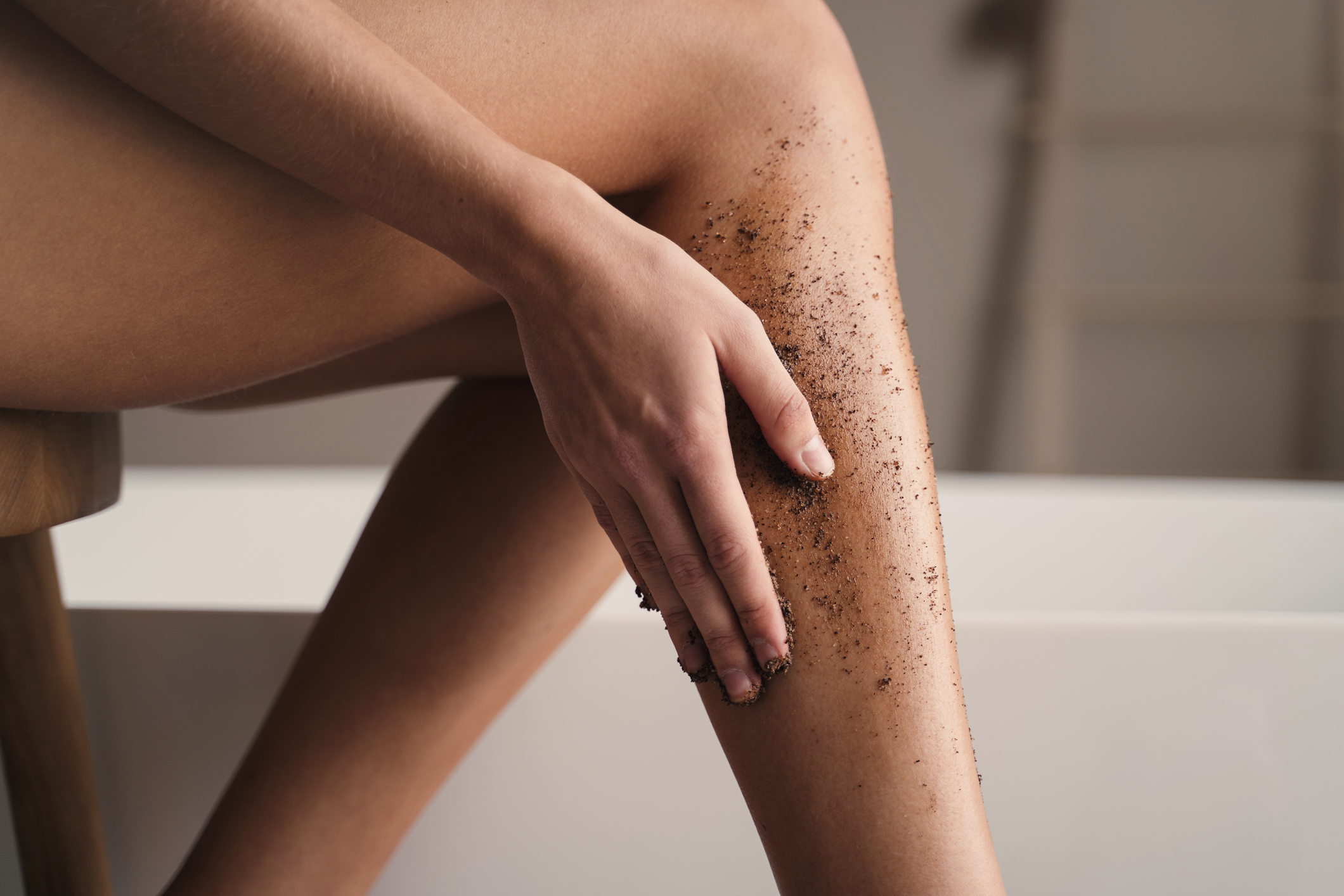
Mechanical peeling can be performed using:
- a peeling glove - a glove made of rougher materials and designed to massage the body
- exfoliating brush - a brush designed for the body - the hairs can be natural or artificial
- exfoliating cosmetics - various creams and pastes for the face or body
Exfoliating cosmetics usually contain tiny particles that can be:
- natural - for example, poppy seeds, crushed fruit pits, sea sand, crushed pumice, raspberry seeds, etc.
- or they consist of man-made water insoluble substances and various plastic particles - their use is gradually being phased out as they do not decompose in nature and accumulate
With regular use once a week for at least one month, we can observe a smoothing of the skin. However, this treatment has no effect on the skin ageing process. It is also not recommended for sensitive, irritated or dry skin.
It is ideal to apply these products gently, massage and do not rush. There is no need to peel or scrub the skin vigorously.
You can make such a scrub at home.
All you need to make a "home scrub" is your favourite cream - whether for face, body or hands. Mix this together with the natural granules mentioned above.
Coffee scrub tip: You can also mix ground coffee with cream after you have prepared your favourite cup of this drink.
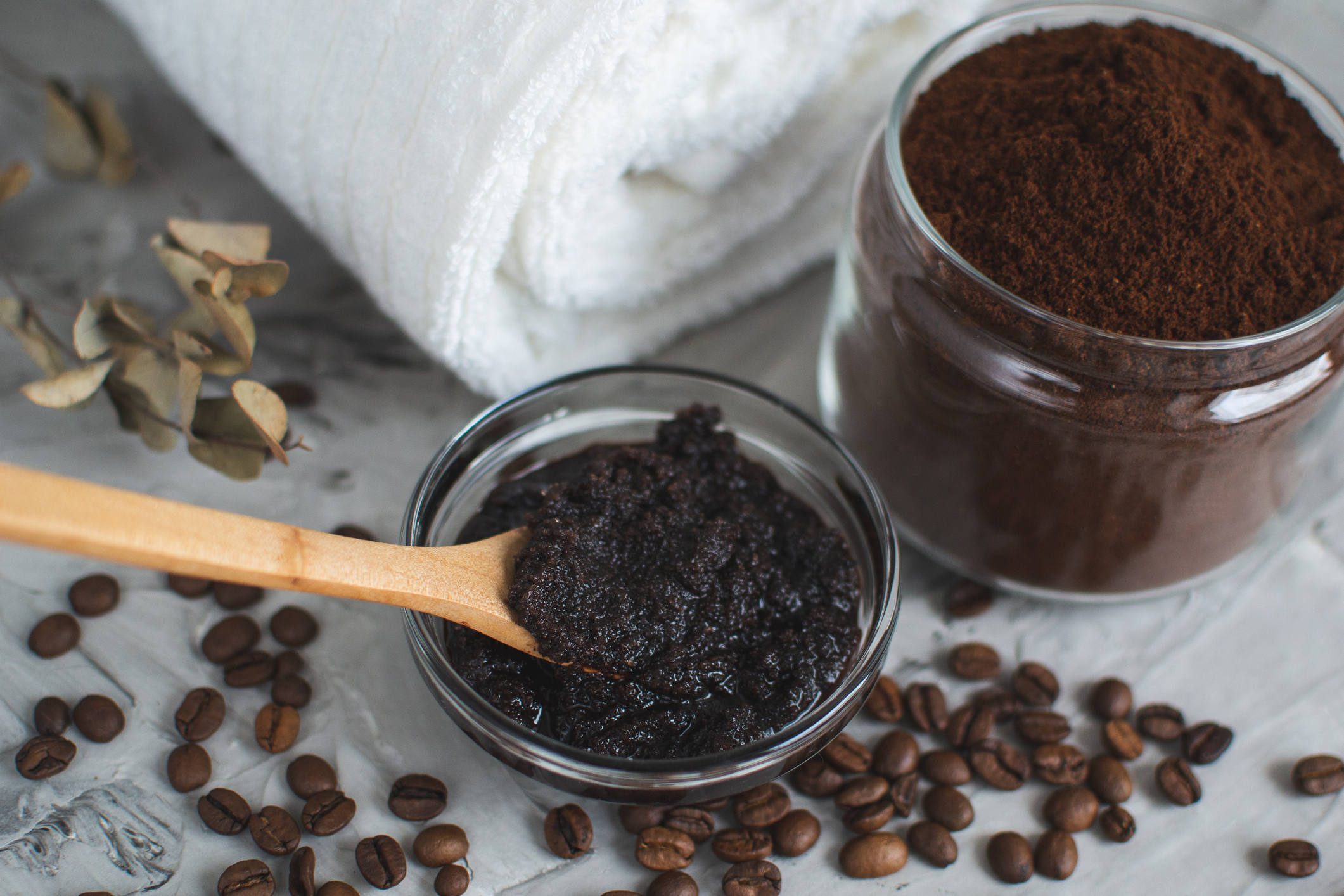
We recommend making no more than one use of this homemade scrub each time. Since these products do not contain any preservatives, they will easily start to spoil or mold.
Peeling treatment is a very effective method for various complications or conditions of our skin. Whether it is acne scars, acne vulgaris itself, wrinkles, or you want to achieve a younger and fuller appearance.
It is important that especially chemical and carbon peels are performed by a professional. You should also not forget to take care of your skin before the peel, but also after.
Interesting resources
Related










